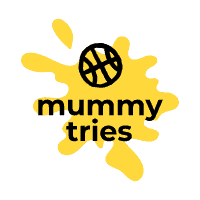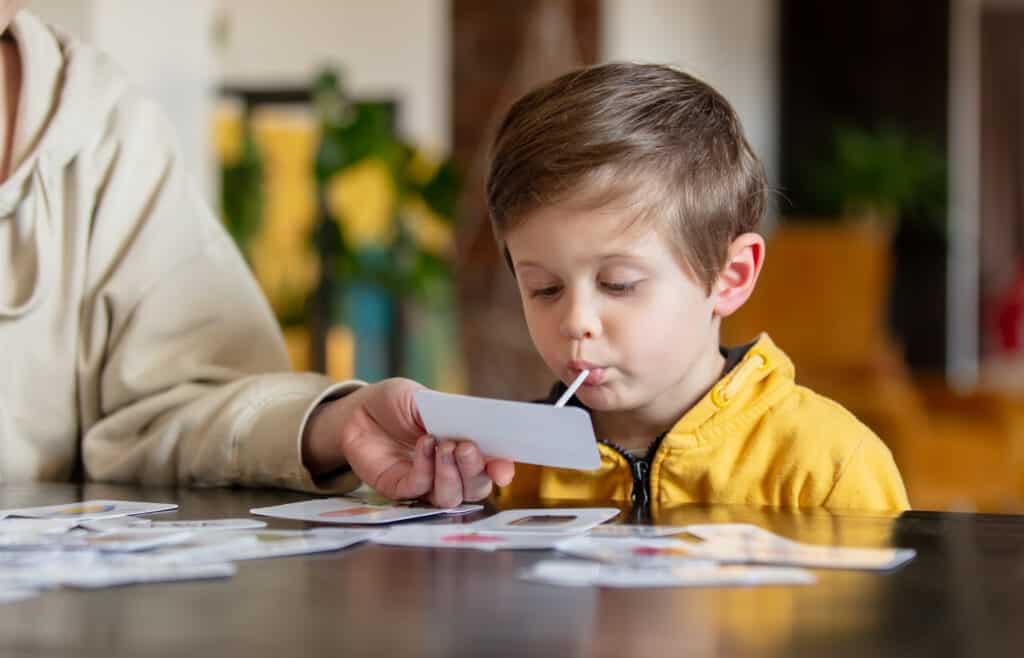Children are known for their curious nature and tendency to explore their surroundings by putting things in their mouths. However, some children take this behavior to the extreme and develop a compulsion to eat non-food items, including paper. This behavior is known as pica eating disorder, and it can have serious health consequences if left untreated.
Understanding Pica Disorder is crucial to recognizing the signs and symptoms of this condition. Pica is a type of eating disorder that involves the consumption of non-food items, such as paper, dirt, chalk, or hair. While the exact cause of pica is unknown, it is often associated with nutritional deficiencies, mental health conditions, and developmental disorders. Children with pica may be at risk for lead poisoning, intestinal blockages, and other health problems.
As a parent or caregiver, it is essential to be aware of the Health Risks of Eating Paper and take steps to prevent this behavior. Parental Guidance and Prevention can include providing a safe and stimulating environment for children, teaching them about healthy eating habits, and seeking professional help if necessary. Alternative Coping Mechanisms, such as providing sensory toys or chewable jewelry, can also help redirect the child’s behavior. When to Seek Professional Help is an important consideration, as pica can be a sign of an underlying medical or psychological condition that requires treatment. Nutritional Education and Management can also be beneficial in managing pica eating disorder and addressing any nutritional deficiencies that may be contributing to the behavior.
Key Takeaways
- Pica eating disorder involves the consumption of non-food items, including paper, and can have serious health consequences if left untreated.
- Parental Guidance and Prevention, Alternative Coping Mechanisms, and Nutritional Education and Management are important strategies for managing pica eating disorder.
- When to Seek Professional Help is crucial, as pica can be a sign of an underlying medical or psychological condition that requires treatment.
Understanding Pica Disorder
Pica disorder is a condition that causes children to eat non-food items such as paper, dirt, chalk, and even feces. This disorder is more common in children than adults and can be a sign of underlying nutritional deficiencies or mental health conditions.
Causes of Pica in Children
The exact cause of Pica disorder is not known, but research suggests that it may be linked to nutritional deficiencies such as iron deficiency and zinc deficiency. Children with developmental disorders, intellectual disabilities, and autism are also at a higher risk of developing Pica disorder.
Common Pica Cravings
Children with Pica disorder may crave and eat a variety of non-food items. Some common cravings include paper, dirt, chalk, and paint chips. Children may also crave and eat hair, ice, and even feces.
Diagnosis and Treatment
If a child is suspected of having Pica disorder, a doctor will perform a physical exam and may order blood tests to check for nutritional deficiencies. If lead poisoning is suspected, a lead test may also be performed.
Treatment for Pica disorder will depend on the underlying cause. If the disorder is caused by a nutritional deficiency, supplements may be prescribed. If the disorder is caused by a mental health condition such as obsessive-compulsive disorder (OCD), treatment may involve therapy and medication.
In conclusion, Pica disorder is a condition that causes children to eat non-food items and can be a sign of underlying nutritional deficiencies or mental health conditions. If a child is suspected of having Pica disorder, it is important to speak with a doctor to determine the underlying cause and appropriate treatment.
Health Risks of Eating Paper
Eating paper can pose several health risks to children. While it may seem harmless, consuming paper can lead to physical and psychological complications.
Physical Complications
Choking and Intestinal Blockage
One of the most significant risks associated with eating paper is choking and intestinal blockage. Children who eat paper may accidentally inhale small pieces of paper, leading to choking. Ingesting large amounts of paper can also cause intestinal blockages, which can be life-threatening.
Infection
Paper is not sterile and can contain harmful bacteria and other microorganisms. Eating contaminated paper can lead to infections and other health issues.
Anemia and Malnutrition
Paper does not contain any nutrients, and consuming it can lead to malnutrition and anemia. Malnutrition can cause developmental delays, stunted growth, and other health consequences.
Psychological Impact
Digestive Issues
Eating paper can also cause digestive issues such as constipation, diarrhea, and stomach pain. These issues can be uncomfortable and painful for children.
Health Consequences
Eating paper can also lead to long-term health consequences such as dental problems, gastrointestinal issues, and nutritional deficiencies. Children who eat paper may also be at a higher risk of developing eating disorders and other mental health issues.
In conclusion, while eating paper may seem like a harmless habit, it can pose several health risks to children. Parents and caregivers should monitor their children’s behavior and seek medical attention if they suspect their child has consumed paper or other non-food items.
Parental Guidance and Prevention
When it comes to preventing kids from eating paper, parental guidance is crucial. Parents should be aware of the early signs of pica disorder and take appropriate action to prevent it from escalating into a behavioral concern. Here are some strategies that can help:
Identifying Early Signs
Parents should watch out for the early signs of pica disorder, such as cravings for non-food items like paper, dirt, or chalk. If a child is showing signs of pica, it is important to talk to a pediatrician to rule out any underlying medical conditions.
Intervention Strategies
Once pica disorder has been identified, it is important to take appropriate action to prevent the behavior from continuing. Aversion therapy can be helpful in some cases, where the child is taught to associate the behavior with a negative consequence. For example, if a child eats paper, they may be given a healthy snack instead, or their favorite toy may be taken away.
Professional help may also be necessary in some cases. A behavioral specialist can help parents develop intervention strategies that are tailored to their child’s needs.
In addition, parents should provide their children with healthy snacks to satisfy their hunger and reduce the likelihood of cravings for non-food items. It is also important to supervise children closely and keep non-food items out of reach.
In conclusion, parents can take steps to prevent their children from eating paper by identifying the early signs of pica disorder and seeking appropriate professional help. By providing healthy snacks and supervising their children closely, parents can help reduce the likelihood of cravings for non-food items.
Alternative Coping Mechanisms
When children eat paper, it is essential to find alternative coping mechanisms to help them break the habit. Here are two effective alternatives that can help children with pica disorder:
Safe Oral Substitutes
Providing children with safe oral substitutes can help reduce their urge to eat non-food items such as paper. Chew toys, oral sensory toys, and chewing gum are some examples of safe oral substitutes that can help children satisfy their oral cravings. These substitutes can also help children with sensory exploration and self-regulation.
Behavioral Therapies
Behavioral therapies such as cognitive-behavioral therapy (CBT) and applied behavior analysis (ABA) can help children with pica disorder learn new coping mechanisms to replace the urge to eat non-food items. These therapies can also help children deal with stress, anxiety, and emotional stress that may be contributing to their pica disorder.
It is important to note that parents and caregivers should consult with a healthcare professional before implementing any alternative coping mechanisms. A healthcare professional can help identify the underlying causes of pica disorder and recommend the most appropriate treatment options.
In conclusion, finding alternative coping mechanisms is essential in helping children with pica disorder break the habit of eating non-food items such as paper. Safe oral substitutes and behavioral therapies are two effective alternatives that can help children satisfy their oral cravings and learn new coping mechanisms.
When to Seek Professional Help
If a child’s paper-eating behavior continues past the age of 4 or 5, it may be a sign of a more serious issue. In such cases, parents should seek professional help from a pediatrician or a mental health professional.
Pica disorder, which is a type of eating disorder, may be the cause of such behavior. Pica disorder is most commonly seen in children between the ages of 2 and 3 years old. Children with pica disorder may eat paper, dirt, or other non-food items because they are curious or exploring their environment. However, if the behavior continues, it may be a sign of a more serious issue that requires professional help.
Aside from pica disorder, there may be other psychological or developmental factors that contribute to a child’s paper-eating behavior. For example, stress, anxiety, or learning disabilities may cause a child to engage in such behavior. In such cases, a mental health professional may be able to provide the necessary support and guidance to help the child overcome these issues.
If a child ingests a large amount of paper or experiences any symptoms such as vomiting, abdominal pain, or diarrhea, parents should contact poison control or seek immediate medical attention.
In summary, if a child’s paper-eating behavior continues or if there are any concerns about the child’s health or well-being, parents should seek professional help from a pediatrician or a mental health professional. It is important to address any underlying psychological or developmental issues that may be contributing to the behavior and to ensure the child’s safety and well-being.
Nutritional Education and Management
Addressing Nutrient Deficiencies
Proper nutrition is crucial for the healthy growth and development of children. Nutrient deficiencies can lead to a variety of health problems, including pica, which is the urge to eat non-food items such as paper. Addressing nutrient deficiencies is an important part of managing pica disorder in children.
Iron, zinc, calcium, and magnesium are some of the key nutrients that children need for healthy growth and development. A deficiency in any of these nutrients can lead to pica. Therefore, it is important to ensure that children are getting enough of these nutrients in their diet.
One way to address nutrient deficiencies is by providing children with healthy snacks that are rich in these key nutrients. For example, cooked pasta with tomato sauce is a great source of iron and zinc, while crunchy vegetables like carrots and celery are rich in calcium and magnesium. Sweet fruits like bananas and apples are also a good source of key nutrients.
Promoting Healthy Eating Habits
In addition to addressing nutrient deficiencies, promoting healthy eating habits is also important for managing pica disorder in children. Encouraging children to eat a balanced diet that includes a variety of healthy foods can help prevent nutrient deficiencies and reduce the urge to eat non-food items like paper.
One way to promote healthy eating habits is by involving children in meal planning and preparation. This can help them develop an interest in healthy foods and make them more likely to eat them. Parents can also encourage children to try new foods and make healthy choices by setting a good example themselves.
In conclusion, addressing nutrient deficiencies and promoting healthy eating habits are important steps in managing pica disorder in children. By providing children with a balanced diet that includes a variety of healthy foods, parents can help prevent nutrient deficiencies and reduce the urge to eat non-food items like paper.
Frequently Asked Questions
What are the potential health risks of children consuming paper?
Consuming paper can lead to a variety of health risks for children. If a child eats paper frequently, it can cause digestive problems, such as constipation or an intestinal blockage. Eating paper can also lead to choking or suffocation if the child swallows a large piece or tries to swallow a piece that is too big.
Could a child’s habit of eating paper be indicative of a nutritional deficiency?
While there is no direct link between a child’s habit of eating paper and a nutritional deficiency, some experts believe that it could be a sign of a mineral or nutrient deficiency. However, this is not always the case, and parents should not jump to conclusions without consulting with a medical professional.
What steps can parents take to prevent their child from eating paper?
Parents can take several steps to prevent their child from eating paper. First, they should make sure that their child is getting a balanced and nutritious diet. Second, they should supervise their child and keep paper and other non-food items out of their reach. Third, they can provide their child with safe and appropriate toys and activities to keep them occupied and distracted.
Is there a connection between eating paper and developmental disorders in children?
There is no direct link between eating paper and developmental disorders in children. However, some children with developmental disorders, such as autism, may be more likely to engage in this behavior. Parents of children with developmental disorders should consult with a medical professional if they are concerned about their child’s behavior.
Why might a child develop a habit of eating non-food items like paper?
Children may develop a habit of eating non-food items like paper for a variety of reasons. Some children may be exploring their environment and experimenting with different textures and tastes. Others may be experiencing stress, anxiety, or boredom and turn to eating paper as a coping mechanism.
How should educators address a student’s behavior of eating paper in the classroom?
If an educator notices a student eating paper in the classroom, they should address the behavior calmly and discreetly. They should explain to the student that eating paper is not safe and offer them alternative activities or distractions. If the behavior persists, the educator should consult with the student’s parents and possibly a school counselor or medical professional.

My name is Laura, and as a mother of two, I understand firsthand the joys and challenges of raising a child. That’s why I created this website, to provide a comprehensive and trustworthy source of information and support for new and expectant parents.




